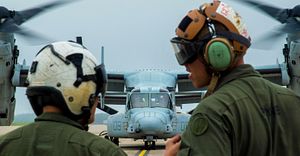The United States and Japan kicked off a weeks-long joint military exercise on August 10 against the backdrop of rising tensions on the Korean Peninsula. The exercise, dubbed Northern Viper (NV17), will be held from August 10-28 at Misawa Air Base and the island of Hokkaido. Misawa Air Base is the northernmost U.S. air base in Japan.
The exercise involves approximately 2,000 U.S. Marines from the 3rd Marine Division and 1st Marine Aircraft Wing and 1,500 Japan Self-Defense Force personnel from the 11th Japan Ground Self-Defense Force (JGSDF) Brigade, one of six active brigades in the JGSDF, and aims to test the interoperability and bilateral capability the two militaries to work together across a variety of areas including peacekeeping operations, humanitarian assistance and disaster relief.
“This exercise enhances and improves interoperability at the tactical level between the Marines and JSDF to keep the forces formidable and adaptive,” an August 11 press release notes. “NV17 showcases a highly-capable, forward-deployed U.S. military presence positioned with their Japanese partners to directly support the security of the Indo-Asia- Pacific region.”
During the exercise, the U.S. military will for the first time ever in Japan fire the M142 High-Mobility Artillery Rocket System (HMARS). HMARS can fire up to six short-range (up to 44 miles) guided missiles armed with a 200-pound warhead or one long-range guided missile with an estimated range of 186 miles. U.S. aircraft participating in the exercise include F-16 fighter jets, UH-1 Hueys and AH-1Z Cobra helicopters.
The U.S. Marine has also decided to fly MV-22 Ospreys during NV17 despite Japanese government requests to ground the tilt-rotor aircraft in the wake of a recent crash. There is ongoing concern over the reliability of the MV-22 given that a number of aircraft in service with the U.S. Marine Corps have crashed in Japan over the last few years.
“This exercise is an opportunity to showcase the joint and bilateral capabilities we have throughout the Indo-Asia-Pacific region,” according to Colonel R. Scott Robe, the commanding officer of the U.S. Air Force’s 35th Fighter Wing. “Misawa is a hub for forward-deployed operations if a real-world scenario were to occur; it is vital for us to maintain security and enhance our combined abilities with our Marine and Japanese partners.”
According to Colonel James F. Harp, the commander of an air group of the U.S. Marine Corps,“this exercise is extremely important because we have very limited opportunities to come together with our Japanese counterparts in a large scale to conduct this type of training. We need to continue training like this to better protect the region from its adversaries.”
Japan’s defense budget has only modestly risen in 2017. The increase in military spending has been driven by a deteriorating security environment in East Asia including ongoing maritime disputes with China in the East China Sea and the growing military capabilities of North Korea. Japan is increasingly coming under pressure to acquire a preemptive strike capability given North Korea’s growing ballistic missile threat.

































